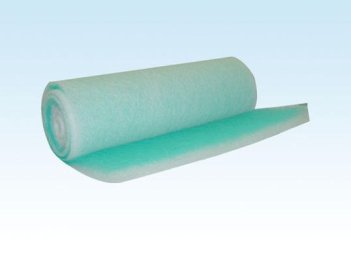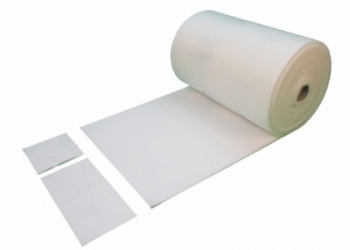Contact us Now!
 Filter Media Service and Maintenance
Filter Media Service and Maintenance
Choosing the correct filter for your paint booth can be a daunting task. The choices you make will have a direct impact on factors including
- the efficiency of your booth
- the quality of the end product to booth maintenance costs
- the safety of technicians.
This guide will introduce you to and give insight into the different types of filters found throughout your booth, as well as maintenance tips to keep your booth running efficiently.
Intake
It only takes particulates around 10 microns to cause a defect on your paint job. You likely wouldn't know it - these are invisible to the naked eye. For reference, that is about 0.0004 inches! This is the importance of intake filters; they provide clean, filtered air to the booth. This ensures your coating operation is free of foreign particles trying to contaminate your paint job.
Exhaust
Where intake filters ensure that you are working with clean air from the start, exhaust filters make sure the air leaving the booth will be safe for the environment, while keeping potentially dangerous chemicals from remaining in the booth's airflow. Exhaust filters capture solid and liquid aerosols that painters can be exposed to through inhalation or dermal absorption. The filters keep those highly toxic materials from being released into the environment after passing through the booth.
Exhaust Filters on Wall
Another main goal of exhaust filtration is to protect your fans, stack and plenum from the buildup of overspray contamination. In order to do this, exhaust filters need to be able to hold enough paint to avoid constantly replacing the filters. At the same time, they must provide a minimal pressure drop within the booth to ensure particulates don't harden and end up on the painted surface.
Just as important as deciding which filters to use is establishing a regular schedule for changing the intake and exhaust filters. The cleanliness of your spray booth and the work you do within depend heavily on it. Clogged or overloaded filters may not allow proper airflow through the booth, causing dust or overspray to recirculate through the booth and affect the finish of your paint job.
The problem is that with so many different styles and brands, filters will reach their 'target' reading and require replacement at varying rates. These rates also depend upon the paint type, booth design, fan speed, temperature, spray equipment, etc.
One way to establish a change-out schedule for exhaust filters is to comapre readimgs from a manometre or magnehelic pressure gauge with the booth manufacturer's specs. Without a pressure guage, it is best to establish a strict maintenance schedule based on the volume of spraying taking place on a day-to-day basis.
Ultimately is is best to work with your spray booth manufacturer or filter supplier to design an effective schedule for changing your filters that finds a good balance between filtration needs and cost efficiency in your booth's performance.
It's very important that you only fit the recommended filters to your SPRAY BOOTH. Fitting filters other than those specified may cause the booth to become unsafe and may affect performance and cleanliness. The specified filters below have been selected for the their superior dust holding ability and long life. It is essential for the sake of quality and safety that you do not compromise on these filters in order to keep your booth functioning correctly.


SPRAYSAFE (WA) C-600G & S-560G INLET FILTER
SpraySafe (WA) C-600G & S-560G inlet filter is made from a anti-breakdown organic synthesis fibre. It has a 'gradual' multi-layered structure whereas the fibre density increases gradually throughout the filter. Dust particles are captured through the various filter layers dependant on the size of the individual particle. The 'gradual' increase in density of the filter allows for a longer filter life as particles are filtered 'through' the filter rather than just the first few layers.
The media is impregnated with an adhesive treatment which further prevents dust particles to pass through. It has a mesh on the air exit side of the filter to further strengthen the material.
When using C-600G and C-560G you can be assured of good air quality.
Conform to European and American classifications for non-flammability.(DIN53438-F1,UL900-class 2 with flameout)
Application:
SpraySafe (WA) S-560G and C-600G filters are used where maximum dust prevention is required. They are very commonly used in the automotive refinish and furniture industries.






